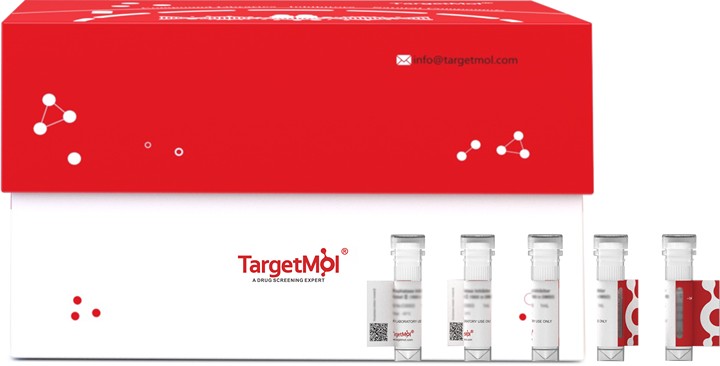 您的购物车当前为空
您的购物车当前为空
ACPL2 Protein, Human, Recombinant (His)
一键复制产品信息acid phosphatase-like protein 2, also known as ACPL2, is a secreted protein which belongs to thehistidine acid phosphatase family. A large-scale effort, termed the Secreted Protein Discovery Initiative (SPDI), was undertaken to identify novel secreted and transmembrane proteins. In the first of several approaches, a biological signal sequence trap in yeast cells was utilized to identify cDNA clones encoding putative secreted proteins. A second strategy utilized various algorithms that recognize features such as the hydrophobic properties of signal sequences to identify putative proteins encoded by expressed sequence tags (ESTs) from human cDNA libraries. A third approach surveyed ESTs for protein sequence similarity to a set of known receptors and their ligands with the BLAST algorithm. Finally, both signal-sequence prediction algorithms and BLAST were used to identify single exons of potential genes from within human genomic sequence.

ACPL2 Protein, Human, Recombinant (His)
一键复制产品信息| 规格 | 价格 | 库存 | 数量 |
|---|---|---|---|
| 5 μg | ¥ 493 | 6-8日内发货 | |
| 10 μg | ¥ 790 | 6-8日内发货 | |
| 20 μg | ¥ 1,330 | 5日内发货 | |
| 50 μg | ¥ 2,580 | 5日内发货 | |
| 100 μg | ¥ 5,170 | 5日内发货 |
产品信息
| 生物活性 | Activity testing is in progress. It is theoretically active, but we cannot guarantee it. If you require protein activity, we recommend choosing the eukaryotic expression version first. |
| 产品描述 | acid phosphatase-like protein 2, also known as ACPL2, is a secreted protein which belongs to thehistidine acid phosphatase family. A large-scale effort, termed the Secreted Protein Discovery Initiative (SPDI), was undertaken to identify novel secreted and transmembrane proteins. In the first of several approaches, a biological signal sequence trap in yeast cells was utilized to identify cDNA clones encoding putative secreted proteins. A second strategy utilized various algorithms that recognize features such as the hydrophobic properties of signal sequences to identify putative proteins encoded by expressed sequence tags (ESTs) from human cDNA libraries. A third approach surveyed ESTs for protein sequence similarity to a set of known receptors and their ligands with the BLAST algorithm. Finally, both signal-sequence prediction algorithms and BLAST were used to identify single exons of potential genes from within human genomic sequence. |
| 种属 | Human |
| 表达系统 | HEK293 Cells |
| 标签 | C-His |
| 蛋白编号 | Q8TE99-1 |
| 别名 | UNQ37/PRO76,FLJ23751,ACPL2 |
| 蛋白构建 | A DNA sequence encoding the human ACPL2 (NP_689495.1) (Met 1-Phe 480) precursor was fused with a polyhistidine tag at the C-terminus. Predicted N terminal: Leu 24 |
| 蛋白纯度 | > 95 % as determined by SDS-PAGE |
| 分子量 | 54 kDa (predicted); 50 kDa (reducing conditions) |
| 内毒素 | < 1.0 EU/μg of the protein as determined by the LAL method. |
| 蛋白性状 | Lyophilized powder |
| 缓冲液 | Lyophilized from a solution filtered through a 0.22 μm filter, containing PBS, pH 7.4. Typically, a mixture containing 5% to 8% trehalose, mannitol, and 0.01% Tween 80 is incorporated as a protective agent before lyophilization. |
| 复溶方法 | A Certificate of Analysis (CoA) containing reconstitution instructions is included with the products. Please refer to the CoA for detailed information. |
| 存储 | It is recommended to store recombinant proteins at -20°C to -80°C for future use. Lyophilized powders can be stably stored for over 12 months, while liquid products can be stored for 6-12 months at -80°C. For reconstituted protein solutions, the solution can be stored at -20°C to -80°C for at least 3 months. Please avoid multiple freeze-thaw cycles and store products in aliquots. |
| 运输方式 | In general, Lyophilized powders are shipping with blue ice. |
| 研究背景 | acid phosphatase-like protein 2, also known as ACPL2, is a secreted protein which belongs to thehistidine acid phosphatase family. A large-scale effort, termed the Secreted Protein Discovery Initiative (SPDI), was undertaken to identify novel secreted and transmembrane proteins. In the first of several approaches, a biological signal sequence trap in yeast cells was utilized to identify cDNA clones encoding putative secreted proteins. A second strategy utilized various algorithms that recognize features such as the hydrophobic properties of signal sequences to identify putative proteins encoded by expressed sequence tags (ESTs) from human cDNA libraries. A third approach surveyed ESTs for protein sequence similarity to a set of known receptors and their ligands with the BLAST algorithm. Finally, both signal-sequence prediction algorithms and BLAST were used to identify single exons of potential genes from within human genomic sequence. |





 |
|